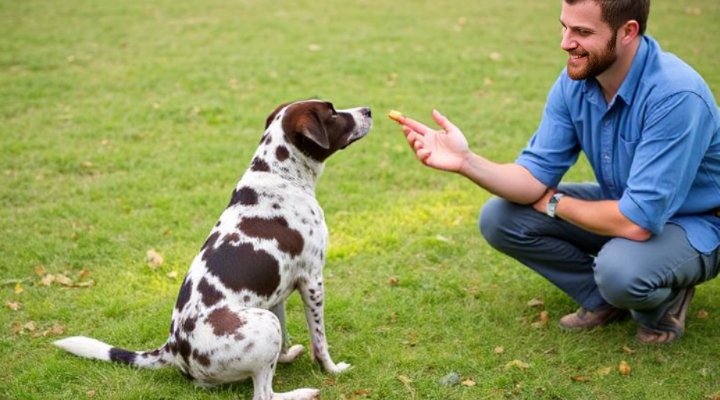Training a deaf dog may seem challenging at first, but with the right deaf dog training tips, it can be a fulfilling journey. Unlike hearing dogs, deaf dogs rely heavily on visual and tactile cues. Therefore, it’s essential to adapt your training methods to their unique needs.

Understanding Your Deaf Dog’s Needs
Deaf dogs are just as capable as hearing dogs when it comes to learning commands and behaviors. However, they require alternative communication methods. For example, instead of verbal commands, you’ll use hand signals or vibrations. Above all, patience and consistency are key.
If you’re new to deaf dog training, start with simple commands like ‘sit’ and ‘stay.’ Use clear, consistent hand signals, and reward your dog with treats or affection. Meanwhile, avoid frustration—your dog is doing its best to understand you!

Effective Communication Techniques
Hand signals are the cornerstone of deaf dog training. Choose distinct gestures for each command, and use them consistently. For instance, a flat palm facing downward can mean ‘sit,’ while a sweeping motion toward your chest can mean ‘come.’
In addition to hand signals, vibrations can be incredibly useful. A gentle tap on the floor or a vibration collar can get your dog’s attention. For example, you can use a vibration to signal ‘look at me’ before giving a hand signal.
Another creative method is using a flashlight. Shine it on the ground to guide your dog or flick it to get their attention. This works especially well in low-light conditions.

Training Exercises for Deaf Dogs
Start with basic obedience training, such as ‘sit,’ ‘stay,’ and ‘come.’ Use high-value treats to motivate your dog, and keep training sessions short and fun. Most importantly, end on a positive note to keep your dog engaged.
For more advanced training, consider agility exercises. Deaf dogs excel in agility because they’re highly attuned to visual cues. Set up a simple course in your backyard and guide your dog through it using hand signals.
If you’re struggling, don’t hesitate to seek help from a professional trainer. Many trainers specialize in deaf dog training and can offer personalized advice. You can also check out our guide on obedience classes for puppies for additional tips.

Building a Strong Bond
Training isn’t just about commands—it’s about building trust and companionship. Spend quality time with your deaf dog, whether it’s playing fetch or simply cuddling on the couch. The more you bond, the more responsive your dog will be during training.
Remember, deaf dogs are highly sensitive to their environment. They may startle easily, so always approach them from the front and avoid sudden movements. For more insights, the American Veterinary Medical Association offers excellent resources on dog behavior.

Common Challenges and Solutions
One common challenge is getting your deaf dog’s attention, especially when they’re focused elsewhere. To solve this, use a vibration collar or stomp lightly on the floor. Once you have their attention, proceed with the hand signal.
Another issue is recall training. Since your dog can’t hear you call, you’ll need a reliable visual cue. Practice recall in a safe, enclosed area, and reward your dog generously when they respond correctly.
For more tips on recall training, check out our article on dog recall training.
Final Thoughts
Training a deaf dog requires creativity and patience, but the rewards are immeasurable. By using hand signals, vibrations, and other visual cues, you can communicate effectively with your furry friend. Most importantly, enjoy the process and celebrate every small victory.
For further reading, the American Kennel Club provides a wealth of information on dog training and care.
Related Keywords: deaf dog training, training a deaf dog, hand signals for deaf dogs, deaf dog communication, vibration training for dogs
